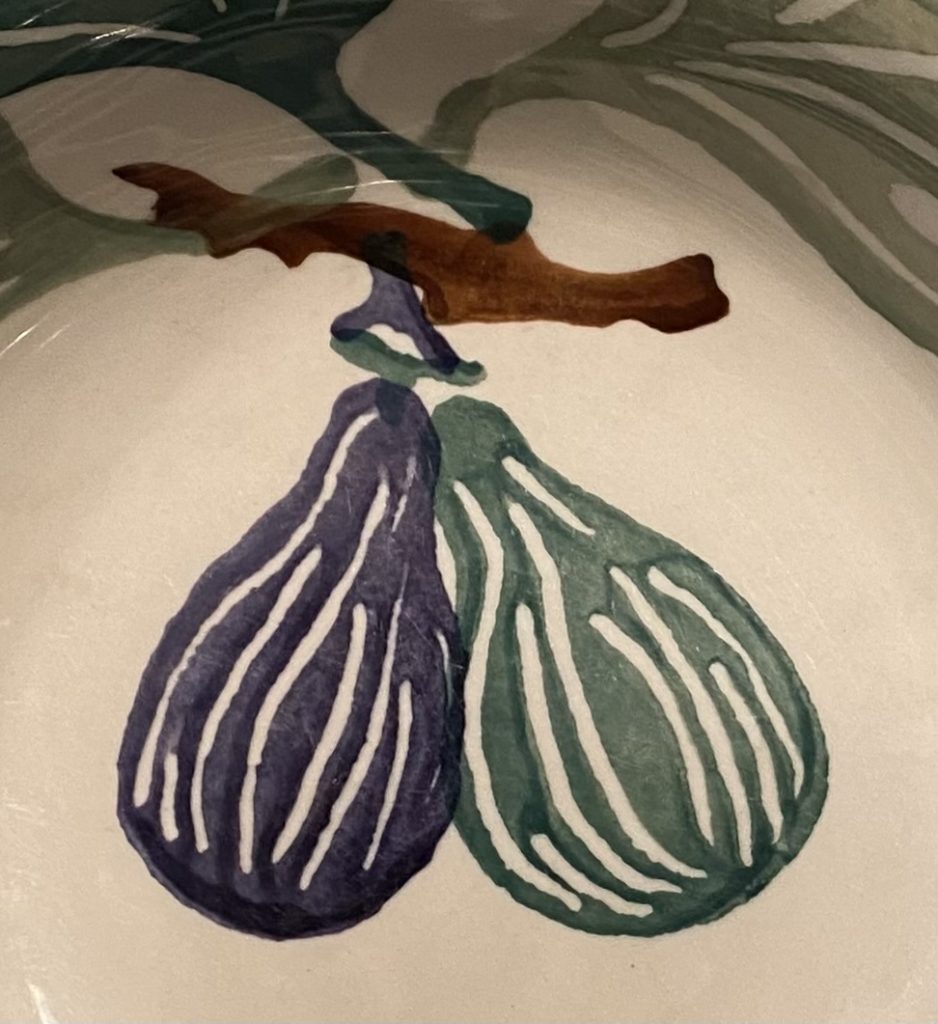
Emma Bridgewater Figs (Photo P. Hunt)
By Patrick Hunt –
If asked what the oldest cultivated fruit might be, how surprised would anyone be to know it could be the fig (represented by the botanical specimen of Ficus carica), apparently cultivated through the long Early Neolithic at least back to the Near East sometime around 9400 BCE as excavations in the Jordan Valley suggest,[1] which means for more than 11,000 years, older than any other known cultivar to date. The evidence includes nine carbonized figs and hundreds of fig drupelets (seed clusters). Biblical enthusiasts would probably nod assent in remembering the literary narrative of Adam and Eve in Genesis 3:7 covered their private parts with fig leaves when they first knew shame and were unable to otherwise face God looking for them in the Garden of Eden.
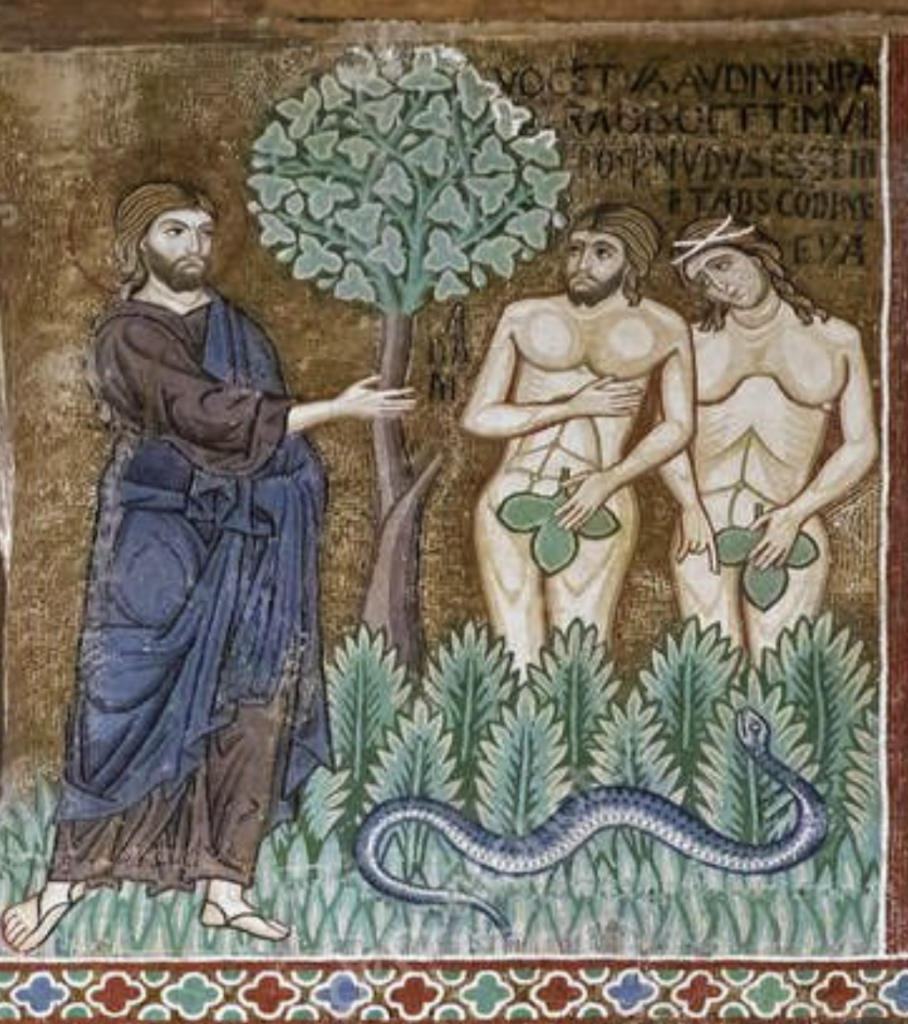
Ashamed Adam and Eve Coming Out Wearing Only Fig Leaves, Capella Palatina, Palazzo Norman, 12th c. Palermo (public domain)
Whether or not the forbidden fruit was also a fig is moot and not only unlikely as well as not in any way a common opinion, partly because the Classical Hebrew word for the forbidden fruit of the Tree of Knowledge of Good and Evil was tappuach, whereas the Classical word for “fig” as seen in the above Gen. 3:7 passage was te’eynah, but it would be extremely ironic if the ancient narrative in any way implied such a connection; even usually avoided in Talmudic commentary. That figs have long been observed by some to resemble testicles might be another rabbit hole – even earthy Italian jokes may note this in not so obvious cognate resemblances between fichi (figs) and ficho (various genitalia). Although the early medieval Roman Church onward assumed the forbidden fruit was an apple as painted in most art ever since, was mostly because the Latin word for apple was mālus (still the genus today after having lost the long a vowel) and the Latin word for “evil” was almost identical as malus with often only a vowel accent to differentiate them. But both figs and apples have long been maligned since even the Ancient Greeks saw apples as love gifts – remember the famous Sappho poetic fragment of Aphrodite’s grove of apples – and both apple and fig were connected to aphrodisiac lore. Roman wallpaintings as in the 1st c. CE Villa Oplontis of Poppea also show baskets full of plump ripe figs.
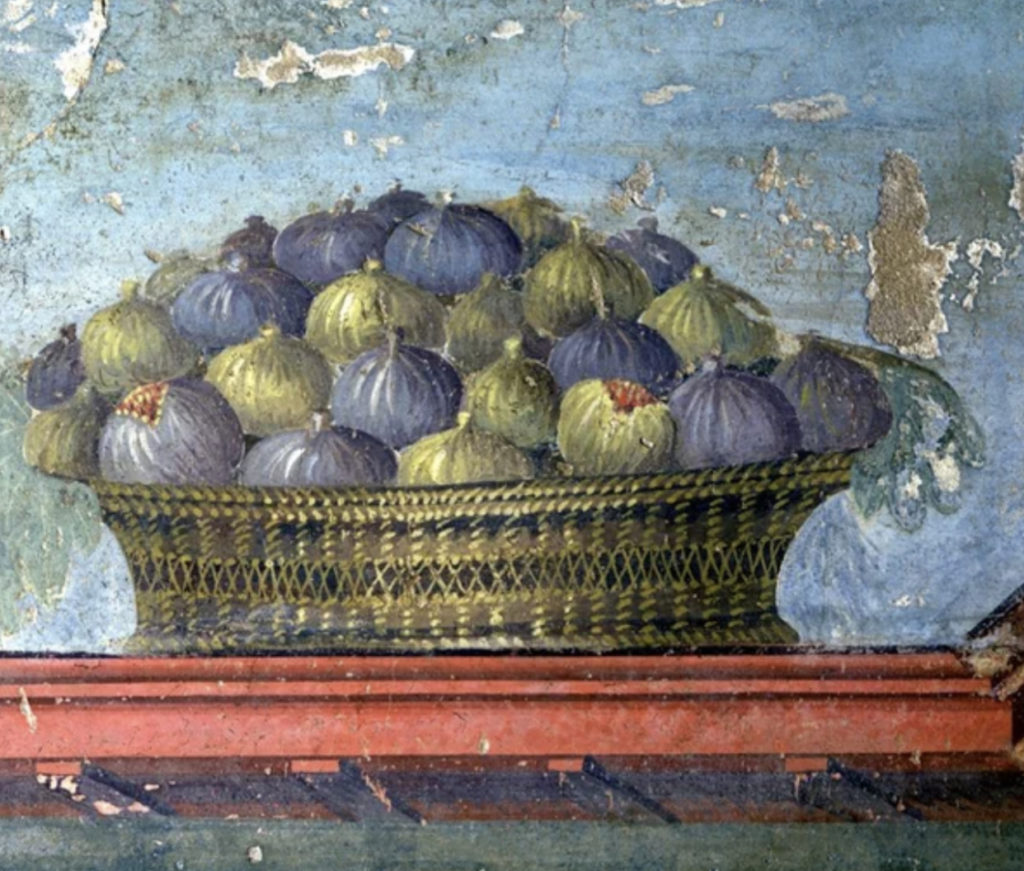
Basket of figs, Roman Wallpainting 1st c. CE, Villa Oplontis of Poppea (public domain)
Apparently there are around 700 global fig varieties in fairly dry or hot climates, and Herodotus claimed around 450 BCE that figs are as old as civilization, which seems tenable.
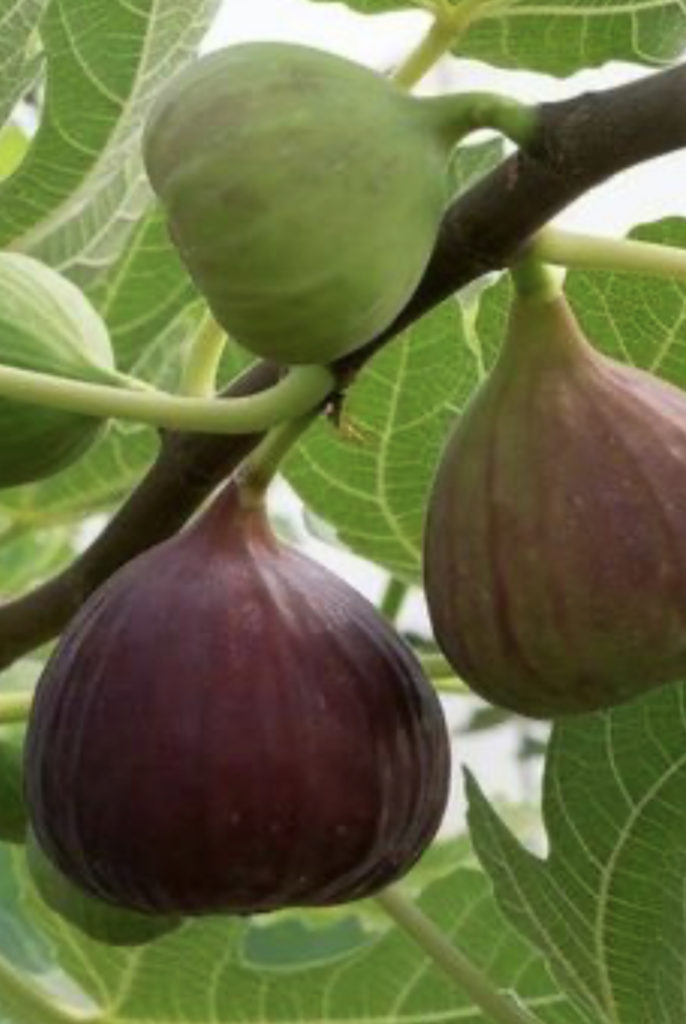
Ripening figs – Ficus carica (public domain)
But another fascinating fact about figs is that while we call a fig a fruit, is it is actually an inflorescence where the flowers are on the inside, not only making for tricky pollination but why you never see a fig tree blossom because it always happens internally and the fig “fruit” (“a cluster of many flowers and seeds inside a bulbous stem”) [2] is technically where the seeds in the florets are within the ovaries.
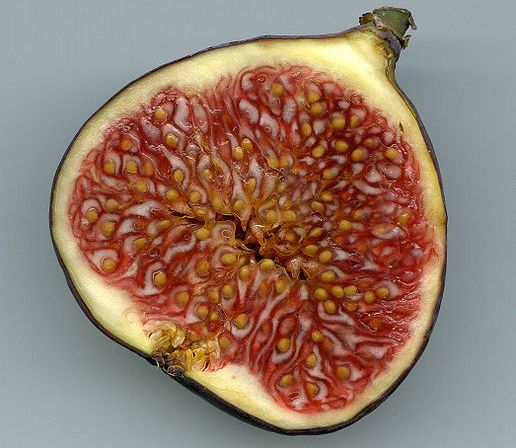
Ripe fig interior showing ovary florets with seeds where the fig flowers internally (public domain)
Given the long history of the fig, Homer’s Odyssey 7:112-121 & ff describes it as one of the trees of the Garden of Alkinous and it is also no coincidence that many Mediterranean paradisus gardens in medieval cloisters often contained the so-called trees of Paradise: date palm, pomegranate and fig. Although a few folk have rare IBS fig allergies, figs are enormously beneficial too, likely a superfood with anti-inflammatory, anti-carcinogenic properties and more potassium than bananas as well as improving digestive health with fiber and offering healthy energy.
Regardless of some of the esoteric – or vaguely erotic – long history of figs, when we make our fig jam from our abundant ripe figs (late this year), we save as much of the harvest for ourselves – we also share it with birds and squirrels (and whatever else we might not want to know) – and while my wife chops out and cooks the thickening fig slurry, I stir and always add a few dollops early on of triple sec, Calvados and Cognac to enrich (but burning off the alcohol) an already heady thick jam in the many jars that seem to last forever even though we give a lot away. Unless they just don’t like fig jam, which is rare, hardly anyone ever refuses our fig jam and we have to keep replenishing the mason jars when they are returned because as our 25 year old fig tree matures our fig crop just keeps proliferating. No wonder the fig was an ancient symbol of fertility and virility! Right now as many bright yellow fig leaves are dropping from our tree in late November as the half-eaten figs on the ground, and the morning chatter of the flock of birds eating in the tree remind us that Augustine’s stolen pear fruit in Confessions II. 6.12 had no such joy as that of our fig-loving birds.
Notes:
[1] M. Kislev. “Early Domesticated Fig in the Jordan Valley.” Science, 312. 5778 (2006) 1372-1374.
[2] “The Story of the Fig…” ESA: Ecological Society of America, May, 20 , 2011 (https://www.esa.org/esablog/2011/05/20/the-story-of-the-fig-and-its-wasp/).